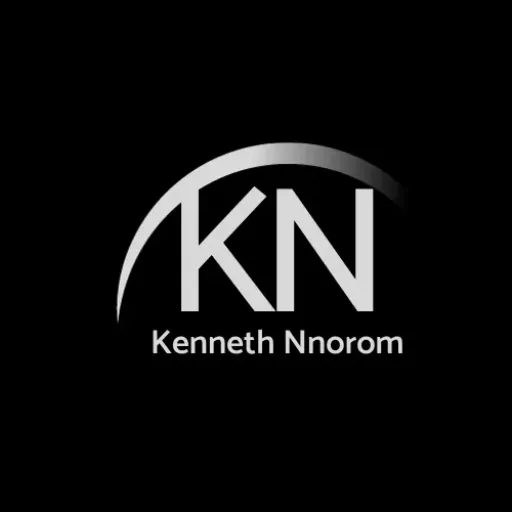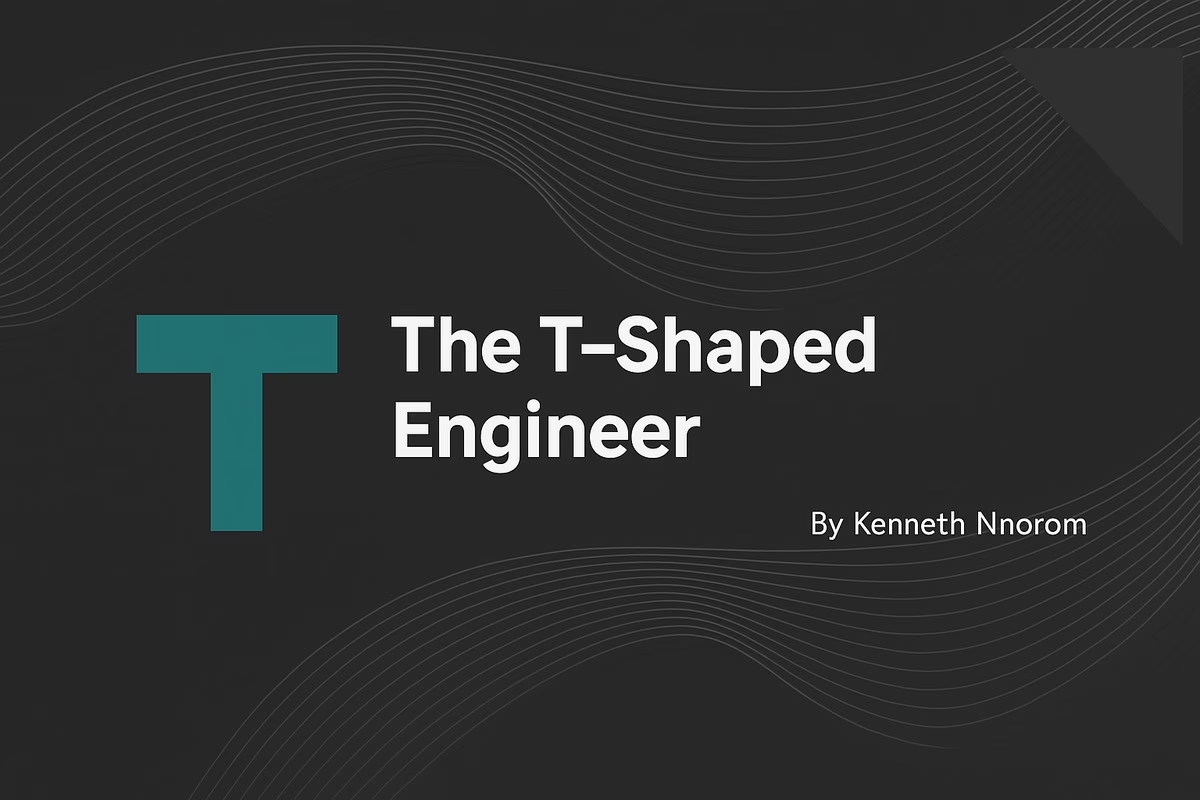Your technical skills as an engineer might be adeqate but might not be enough. You can design the most brilliant systems, but those systems live in the real world, one that’s governed by contracts, regulations, and human rights.
This is exactly where the idea of the T-shaped engineer in Nigeria comes in. It’s no longer enough to just be a technical expert (the vertical bar of the ‘T’); you need the broad, horizontal bar of understanding business, policy, and especially law.
As a network engineer myself, I see this shift every single day. While the T-shaped concept applies to all engineers, I’m writing this from my perspective, because in networking, our work is the literal foundation for modern commerce and expression.
Honestly, knowing the law is becoming an engineer’s new superpower. It’s what elevates you from a simple implementer into a strategic architect of our nation’s development.
What is This “Legal Stack”?
We engineers love our stacks. For me, as a network engineer, it’s the OSI model and TCP/IP. These frameworks help bring order to chaos. Just as networking stacks simplify complexity, a “legal stack” organizes the rules and responsibilities that shape what you build.
Layers 1 & 2 (The Physical Stuff)
At the base layers, you’re dealing with hardware and cabling. Well, the corresponding legal layer governs something you can touch or feel physically. Think about laying fibre optic cables. That’s not just a technical job but it’s property law for securing right-of-way and environmental regulations for building a new data centre. Ignoring this layer means your project hits a wall before the first packet is sent. It’s the legal equivalent of forgetting to plug in the power.
Layers 3 & 4 (The Network Core)
Here, you’re routing traffic and ensuring data delivery. Legally, this corresponds to telecommunications law and interconnection agreements. You configure a router. Simple, right? But what happens when you get a directive to block an app?
Suddenly, that routing decision is a major one about free expression and legal liability. This is precisely what happened in the landmark SERAP v. Federal Republic of Nigeria case over the 2021 Twitter ban. Your Access Control List (ACL) command just got very, very serious.
Layers 5-7 (The Application & Data)
This is where it gets really hot. At the top, you’re managing user sessions, encryption, and the data itself. This legal layer is dominated by the Nigeria Data Protection Act (NDPA) 2023 and the Cybercrimes Act 2015.
When you implement encryption, you must meet the “appropriate technical measures” required by the NDPA. When you design an app, you must build in mechanisms for lawful consent. You are, by default, a data custodian. That’s not just a title; it’s a legal responsibility.
Your Legal Toolkit: Turning Risk into Value
This legal knowledge isn’t just about avoiding trouble. Instead, it’s a proactive toolkit for creating tangible value and mitigating risk from day one.
Intellectual Property (IP)
This is where you move from defense to offense. That slick automation script you wrote? That’s not just a fix, but could be a copyrightable asset. That network architecture you designed or a process might be patentable. Without a working knowledge of IP, you’re just giving value away. Just look at the 2025 trademark dispute between Paystack and Zap Africa over a product name. An IP-aware engineer on the team might have flagged the potential for “likelihood of confusion” and saved a world of trouble.
Contracts (Your Operational DNA)
A Service Level Agreement (SLA) isn’t just legal paperwork; it’s the blueprint for how you operate. On the surface, it might boast “99.99% availability,” but an engineer who knows the fine print digs into what “downtime,” “latency,” and “packet loss” actually mean. That insight helps match the network’s real capabilities to its promises, avoiding expensive slip-ups.
Tort Law (Your Expanding Duty of Care)
This is the one that often gets overlooked. While contracts govern defined relationships, tort law covers your duty of care to society. The key principle here is professional negligence. If your negligent firewall configuration leads to a data breach that harms thousands of customers, your company (and possibly you) could be liable. It forces you to ask not just, “Does this work?” but also, “Have I taken all reasonably careful steps to prevent foreseeable harm?”
Engineering is Literally Building the New Nigeria
This T-shaped model is so critical because, Engineers are directly involed in executing Nigeria’s National Development Plan (NDP). The plan calls for N348.1 trillion in investment, mostly from the private sector. Where is that money going? Straight into engineering-driven projects.
Case Study: Physical & Industrial Giants
You only need to look at the Lekki Deep Sea Port and the Dangote Refinery. These aren’t just construction projects; they are monumental feats of engineering that are fundamentally reconfiguring our nation’s capacity for trade and energy independence. They are the NDP rendered in steel and concrete.
Case Study: The Digital Superhighway
While some build with concrete, others build with data. The ongoing 5G rollout and strategic expansions by companies like MainOne/Equinix are building the digital backbone of our 21st-century economy. Landing the 2Africa submarine cable in Port Harcourt, for example, isn’t just a technical win. It’s a strategic move that breaks the Lagos monopoly on international bandwidth, creating resilience for the entire country’s internet.
The T-Shaped Engineer in Nigeria: Where We Go From Here
So, what does this all mean for you? It means you are no longer just “the tech guy” hidden in a server room.
- You are a data custodian under the NDPA, with real liability.
- You are an implementer of civil rights, as the SERAP v. Nigeria case showed. Your actions at the network layer have human consequences.
- Most importantly, you have the opportunity to be a policy shaper. Policymakers often don’t understand the tech they’re trying to regulate. The T-shaped engineer can bridge this chasm, explaining the technical realities so we get smarter, more effective laws that don’t stifle innovation.
Ultimately, the future of Nigerian engineering isn’t just about what we can build. It’s about how we build it: responsibly, strategically, and with a full understanding of the law. The T-shaped engineer in Nigeria is the future. My advice? Start building your ‘T’ today.


Leave a Reply